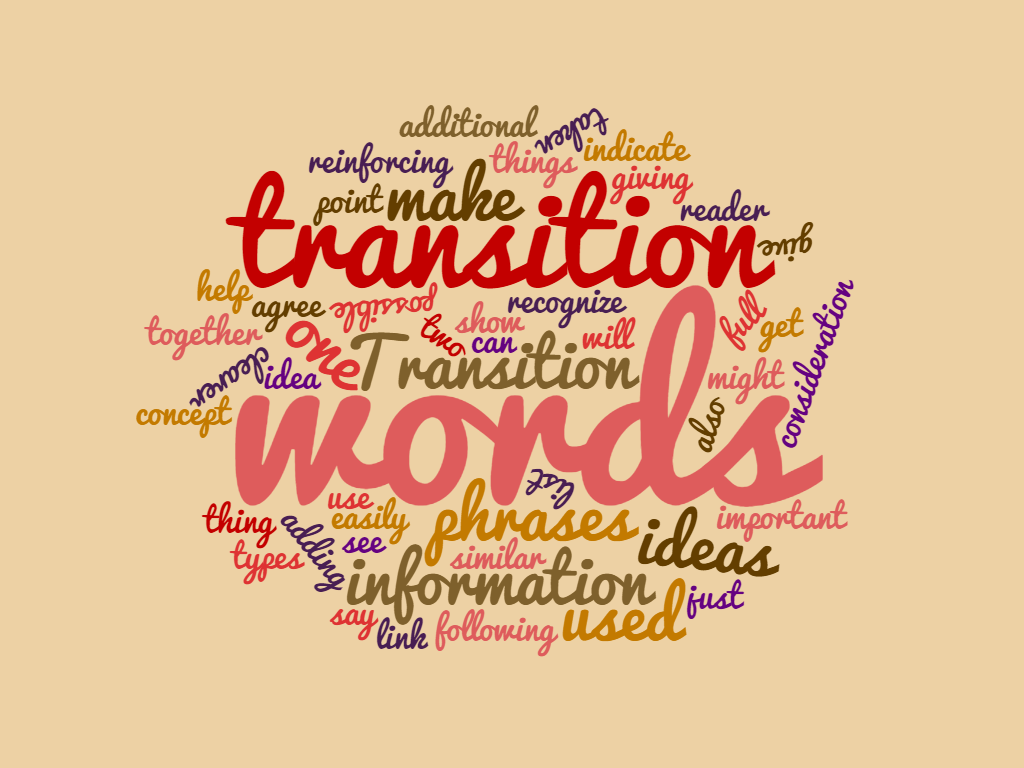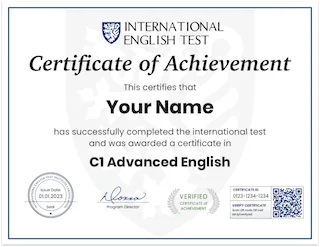Understand the concept of transition words and common used transition Phrases in English. Discover online English tutors to improve your English skills.
What is your English level?
Find out your A1 A2 B1 B2 C1 C2 level of English with our quick, free online test.
Welcome to the captivating realm of transition words! If you’ve ever sensed that your writing could benefit from an extra touch of enchantment to seamlessly link your ideas, look no further than transition words.
As their name implies, transition words are words or phrases that aid in smoothly transitioning from one idea to the next, whether you are speaking or writing. Their use enhances the overall flow and facilitates a clearer comprehension of your ideas, as well as the interconnectedness of your thoughts.
In this article, we will delve into the definition and significance of transition words, explore the various types available, and examine how they enhance your writing. We will also assess which ones to employ depending on your writing style. By the conclusion, you will possess a wealth of insights on effectively using transition words, along with a plethora of illustrative examples.
Transition words: their meaning and purpose
One of the primary objectives in writing is to present information in a manner that is readily comprehensible. This is where transition words, also referred to as conjunctive adverbs, play a crucial role. According to the definition provided by Merriam-Webster, transition words “give writers the opportunity to prepare readers for a new idea, connecting the previous idea to the next one.” In simpler terms, they serve as bridges, linking your ideas and arguments together.
What’s their purpose? It’s to transform your writing into a coherent conversation rather than a disjointed monologue. Transition words achieve this by leading readers through the twists and turns of your thoughts, constructing a clear and engaging path that is easy to follow and understand.
Transition words and phrases have versatile applications, encompassing the following functions:
1. Linking akin thoughts and concepts.
2. Transitioning from one subject to another.
3. Accentuating the significance of a specific point.
4. Establishing connections between conflicting arguments or ideas.
Moreover, we will explore the various categories of transition words shortly.

Categories of transition words and their functions
Consider transition words as links that aid in connecting your ideas. However, various ideas call for specific linkages. Being able to discern which type to utilize can significantly impact the clarity and logical presentation of your ideas.
Here are some of these types:
Additive transition words
Among the various types of transition words, additive transition words are the most prevalent. They serve the purpose of providing extra details about the preceding idea or placing emphasis on a specific point.
Example sentences:
- You missed the offer because you didn’t come early. Not to mention, you don’t have the experience needed to qualify.
Comparative transition words
These transition words aid in drawing comparisons between two ideas or concepts, focusing on either their resemblances or disparities. For example, “similarly” is most suitable for emphasizing shared traits, whereas “on the other hand” is effective in highlighting differences.
Additional instances include “after all,” “despite,” “on the contrary,” and “at the same time.”
Example sentences:
- Dogs are very friendly. Cats, on the other hand, can be aloof.
Emphatic/Repetitive transition words
On occasion, you may wish to inject an element of emphasis into your writing to underscore your point effectively. Terms such as “indeed,” “undoubtedly,” and “absolutely” can assist in making a forceful statement or showcasing your unwavering confidence in your idea.
Additional frequently employed emphatic transition words include “again,” “as I mentioned earlier,” “without a doubt,” “as I have pointed out,” and “I reiterate.”
Example sentences:
- Working from home is, without a doubt, a great way to maintain a better work-life balance.
Are you C1 Advanced English?
Get your C1 Advanced English certificate now!
✓ Add your certificate to your resume
⭐ ⭐ ⭐ ⭐ ⭐
Illustrative transition words
Illustrative transition words become helpful when you intend to furnish examples to bolster or elucidate your point. Their purpose is to establish a connection between a broad concept and a specific illustration of that concept. “For example” and “for instance” serve as excellent transition words for this purpose.
Additional instances include “to illustrate,” “to demonstrate,” and “that is.”
Example sentences:
- I enjoy nature a lot. For example, I could sit under a tree and watch birds fly all day.
Causal transition words
Causal transition words are most suitable when you aim to demonstrate the connection between a cause and its resulting effect. Words like “because” and “therefore” can be employed to clarify how one event leads to another.
Additional frequently used options encompass “as a result,” “in order to,” “accordingly,” “thus,” “hence,” “on account,” and “consequently.”
Example sentences:
- I’m tired. Therefore, I won’t be working tonight.
Sequential transition words
Sequential transition words come in handy when delineating a process that unfolds step by step or when presenting a series of events. They aid in conveying to readers the temporal, ordinal, and sequential arrangement of your ideas.
Effective examples encompass “then,” “first,” “in addition,” “subsequently,” “afterward,” “to start with,” “second,” and “before.”
Example sentence:
- First, we’ll gather the ingredients. Next, we’ll mix them. Finally, we’ll bake the most delicious cookies the world has ever seen!

Conclusive transition words
These words prove valuable when bringing a subject to a close or making a final statement, particularly as you conclude a written piece. Transition words such as “in conclusion,” “to summarize,” and “ultimately” indicate that you are approaching the culmination of a concept.
Additional instances of conclusive transition words include “finally” and “lastly.”
Example sentences:
- In conclusion, transition words are essential for smooth and clear communication in English.
- To sum up, you should use transition words in essays to improve your writing.
These are just a few of the transition words you can use in English, but we’ve included even more examples later in this article. Before we get to them, let’s look at some of the ways transition words can help your writing.
Advantages of incorporating transition words
There are many benefits of using transition words and phrases. These words can:
Enhance Fluidity and Comprehensibility
Transition words enhance the comprehensibility and fluidity of your writing by directing your readers seamlessly from one point or concept to another. They establish a well-defined route from the beginning to the end of your text, marking significant junctures along the journey.
Improve the Coherence of Paragraphs and Essays
Transition words serve as the adhesive that binds your ideas cohesively. When appropriately applied in essays and academic compositions, they render your argument or narrative easily understandable. Readers can seamlessly trace your thought process and gain a comprehensive understanding of your ideas or viewpoints.
Suggestion: For optimal clarity, it is advisable to employ transition words at the outset of each paragraph within an essay, thus establishing explicit connections throughout the text.
Transition words in relation to various writing styles
By aligning transition words with your specific writing style, you can elevate your communication in distinctive ways, ultimately enabling you to leave a more pronounced impression. To assist in achieving this, we will now delve into diverse writing styles and identify the transition words that are most suitable for each.
Academic Writing
Within the realm of academic writing, transition words serve as valuable instruments for steering readers through intricate theories, reinforcing evidence, and constructing cogent arguments. Frequently, terms like “Moreover” and “Furthermore” are employed to expand upon existing points, whereas “Conversely” and “Nonetheless” aid in addressing contrasting perspectives.
Incorporating transition words into your term papers and theses can assist you in presenting your arguments with precision, substantiating your assertions, articulating your concepts, and establishing links between various pieces of evidence.
Creative Writing and Narrative Crafting
Narratives and works of creative writing abound with actions and thoughts. Yet, how does one seamlessly transition from one scene, activity, or plot twist to another in an enthralling manner? The solution lies in the use of transition words! These serve as the concealed weapon of storytellers, aiding in maintaining readers’ engagement and understanding of the unfolding narrative. They ensure the fluidity of your story and hold the reader’s attention throughout its twists and turns.
Transition words such as “suddenly,” “meanwhile,” and “eventually” infuse vitality into your storytelling, ensnaring the reader’s imagination from inception to conclusion.
Are you C1 Advanced English?
Get your C1 Advanced English certificate now!
✓ Add your certificate to your resume
⭐ ⭐ ⭐ ⭐ ⭐
Guidelines for utilizing transition words proficiently
When it comes to transition words in English, a little goes a long way. Here are some tips to wield them like a pro:
Take into account the context and tone
Opt for transition words that align with the tone of your writing. In formal compositions, gravitate towards terms like “moreover” and “in addition.” In informal or creative works, “meanwhile” and “suddenly” are more suitable choices.
Steer clear of excessive repetition
While transition words enhance the clarity of your text or speech, their excessive use can render them counterproductive. Just as excessive salt in a dish can mar its flavor, inundating your writing with transition words should be avoided. Learn to judiciously incorporate them, striking a balance that avoids overwhelming your readers.
Maximize their utility in fictional writing
In the realm of fiction, transition words play a crucial role in facilitating the seamless transition between different elements such as descriptions, character perspectives, paragraphs, scenes, actions, ideas, dialogues, temporal shifts, and character introductions.
More examples of transition words
In a previous section of this article, we presented a handful of diverse transition words that can enhance your writing. However, those were just a small sample of what’s available. Here, we have compiled some of the most frequently used categories of transition words, along with additional illustrative examples for each.
Additive transitions
1. Adding information
Employ these terms and expressions when you aim to introduce supplementary details:
| Furthermore | Additionally | In addition to |
| Moreover | Another key point | Also |
| By the same token | Just like | With this in mind |
| In the same fashion | Just as | In like manner |
| Indeed | Too | In the first place |
2. Presenting alternatives
When considering alternatives, these instances help lead your readers through the various options at hand:
| Alternatively | Instead | Not to mention |
| On the other hand | Rather | At the same time |
| This may be true | Then again | Although |
| Above all | In reality | Otherwise |
Causal transitions
1. Expressing cause and effect
Harness the potential of cause and effect with these terms, unveiling the sequence of events where one action triggers a corresponding reaction:
| As a result | Thus | For that reason |
| Consequently | Therefore | Because |
| Hence | On account of | Accordingly |
| Under these circumstances | As | Thereby |
| Due to | Subsequently | In which case |
| Granting that | On the condition | In the event that |
2. Demonstrating purpose
These words and phrases help you show why actions are taken:
| So that | In order to | For the purpose of |
| Granted that | Provided that | With this purpose |
| Owing to | Seeing that |
Sequential transitions
1. Indicating time and sequence
These words are your timekeepers, ensuring your readers never get lost:
| First, second, third, etc. | Subsequently | Finally |
| To begin with | Next | Before |
| Last but not least | Meanwhile | Initially |
| By the way | To resume | Anyhow |
| Finally | In short | Incidentally |
| To change the topic | In sum |
2. Enumerating points
Want to present a series of points? These sequential transition words make sure each one gets its moment in the spotlight:
| First and foremost | First, second, third, etc. | Lastly |
| Moreover | Further | In addition |
Illustrative transitions
1. Providing examples and illustrations
Ready to prove your point or support an argument? These illustrative transitions help to back up your claims:
| For instance | To illustrate | As an example |
| Namely | According to | Including |
| For example | Such as | To demonstrate |
2. Elaborating on points
If you’ve made a complicated point, these words and phrases signal that you want to put the idea in simpler terms or dive deeper into the topic:
| In other words | In this case | Put another way |
| To put it differently | That is to say | To rephrase |
| Namely | To explain | To clarify |
Conclusion
There you have it – a fundamental introduction to transition words! These valuable tools play a pivotal role in facilitating lucid communication in the English language. Transition words encompass various categories, and it’s crucial to deploy them judiciously to sustain reader engagement. By harmonizing them with your particular writing style, they can efficiently establish connections between sentences and concepts, ensuring the seamless flow of text.
So, embrace the influence of transition words, infuse them into your writing, and let your prose radiate! With practice, you’ll soon employ them effortlessly, transforming an array of disparate ideas into a well-structured and coherent whole.
For those interested in refining their use of transition words in English, why not contemplate becoming a part of the dynamic learning community at Preply? Preply boasts a multitude of online English tutors who can assist you in becoming a more proficient English speaker and writer.
What is your English level?
Find out your A1 A2 B1 B2 C1 C2 level of English with our quick, free online test.





